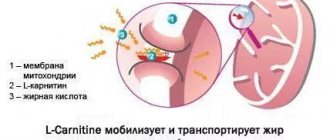Author: Tselmer N.E., obstetrician-gynecologist, first qualification category. March, 2021.
Abortion is the artificial termination of pregnancy up to 22 weeks.
Currently, there are several methods that are used depending on the period. Important! At the woman's initiative, abortion is carried out only up to 12 weeks.
Further - exclusively according to strict indications. Vacuum abortion - removal of the fertilized egg using vacuum suction:
- Up to 6 weeks: performed without cervical dilatation on an outpatient basis (mini-abortion);
- 6-12 weeks: performed in the hospital with dilatation of the cervix.
Medicinal - produced with the help of medications (mifepristone, pencrofton) that provoke a miscarriage:
- Up to 9 weeks: drug interruption can be carried out on an outpatient basis;
- 9-12 weeks: only in hospital;
- Weeks 12-22: carried out strictly according to indications in a hospital setting.
Curettage (surgical abortion) is an operation during which the doctor scrapes the uterus with a sharp obstetric curette and removes the fertilized egg. Currently, it is recommended extremely rarely due to the high likelihood of complications:
- Weeks 6-12: performed only in a hospital under general anesthesia.
- After 12 weeks, dilation of the cervix and curettage with sharp surgical instruments are not performed due to the large size of the fetus and the pregnant uterus. The walls of the uterus become soft and stretched, they are easily perforated (accidentally pierced) with instruments to dilate the cervix and evacuate the fertilized egg. In this case, the danger from surgery is too high for a pregnant woman. Curettage of the uterus over a long period of time is possible only after a miscarriage has occurred with a contracted uterus (this sometimes has to be done in the case of remnants of the fertilized egg in the uterus and signs of bleeding).
Any abortion, as a serious medical intervention, inevitably carries with it the risk of complications. Some negative consequences and complications after an abortion may be characteristic of a particular method of termination of pregnancy.
Possible complications
For medical abortion
Medical termination of pregnancy is considered the safest, but it also carries risks.
- uterine bleeding requiring instrumental evacuation of the uterus in a hospital (vacuum aspiration of the uterine cavity) and the use of uterine contractions;
- incomplete abortion (remnants of the fertilized egg are also removed using vacuum aspiration of the uterine cavity in a hospital);
- infectious complications (the risk of their development is less than 1% of cases);
- progression of pregnancy in a situation where rejection of the fertilized egg has not occurred.
For vacuum and surgical abortion
Early complications
Occurs directly during the procedure and on the first day of the postoperative period
- Bleeding during the procedure can occur if the patient’s blood coagulation system is disrupted, as well as if there is no proper contraction of the uterine walls during the procedure. The walls of a uterus that has given birth many times or suffered a large number of abortions contract poorly (defective muscle tissue). This condition requires the use of large doses of drugs that contract the uterus; in very rare cases, if it is impossible to stop the bleeding, the uterus is removed. In case of disorders of the blood coagulation system, replacement of coagulation factors is carried out through the use of drugs or blood transfusions.
- Perforation of the uterus (accidental puncture) rarely occurs during a vacuum abortion, since sharp instruments are not used. However, although rare, this can occur when the cervix is dilated or the length of the uterine cavity is examined using a uterine tube before the procedure.
- When performing curettage using a sharp curette, the risk of perforation of the uterine wall increases. A sharp instrument can penetrate the wall of the uterus and injure the adjacent intestinal loops and bladder. In this case, the abortion operation ends with a transition to abdominal surgery (for suturing an intestinal wound, for example, or stopping bleeding from a perforated uterine wall).
- Directly during the procedure, an allergic reaction to anesthetic drugs may occur.
- When the cervical canal expands, the cervix may be injured.
Late complications
May be observed within a week or several months after surgery:
- After an abortion, bleeding normally continues for several days. Sometimes after an abortion and dilatation of the cervix, the cervical canal closes too early, blood accumulates in the uterine cavity and a so-called hematometer complication occurs. Such a complication can be suspected if, the next day after the abortion, a woman complains of sharp pain in the lower abdomen and notes the cessation of bleeding from the genital tract on the first evening. Hematometra is also visible on ultrasound (the uterine cavity is clogged with blood clots and the cervix is closed). Depending on the volume of accumulated blood, this situation can be resolved with the help of medications or re-expansion of the cervical canal and vacuum aspiration of clots. This complication can be prevented by taking antispasmodics the evening after an abortion (for example, 1-2-3 tablets of drotaverine or no-spa).
- Prolonged bleeding, as well as pain in the lower abdomen, may indicate that the procedure was not completed completely and embryonic elements remained in the uterine cavity, which can initiate serious inflammatory processes. In case of incomplete abortion, there is a need for additional surgical intervention (scraping out the remnants of the fertilized egg from the uterine cavity).
- Placental polyp - on a control ultrasound 2-4 months after an abortion, a polyp-like outgrowth of the uterine cavity appears. Clinically, this may manifest as painful and irregular menstruation after pregnancy loss. A placental polyp grows from the remains of the tissue villi of the fetal egg. The placental polyp also has to be removed under anesthesia, with dilation of the cervix, usually using a curette and a hysteroscope (an instrument with a video camera for examining the inside of the uterus).
- Post-abortion depression.
Inflammation after abortion
Another late complication of abortion may be the addition of an inflammatory process. During an abortion, this usually occurs if the patient has a weakened immune system and there is a chronic infection in the lower genital tract. Even after sanitizing the inflammatory type of smear before an abortion, aggressive microorganisms may remain in the genital tract, which, when instruments are inserted into the uterus, enter it from the vagina. Microtraumas of the walls and cervix contribute to the development of inflammation.
In case of acute inflammation, the patient will have:
- pain in the lower abdomen,
- fever,
- purulent or mucus discharge from the genital tract.
This is a clinic for endometritis (inflammation of the uterine lining). From the uterus, the inflammatory process can spread upward through the fallopian tubes and into the pelvis.
When inflammation and pus appear in the fallopian tubes, salpingitis develops.
When the ovary is pulled into the process, salpingoophoritis occurs and adhesions are formed between the ovary, tubes and uterus.
After treatment, patients may be bothered by “leucorrhoea” from the genital tract for a long time.
When pus flows from the fallopian tubes into the pelvic cavity, peritonitis develops, inflammation and adhesions spread to neighboring organs (intestinal loops, bladder). Long-term anti-inflammatory and antibacterial therapy will be required; in the presence of pus in the fallopian tubes and pelvis, surgical treatment will be required.
About the dangers of abortion
The harm of abortion is not only the risk of infection, infertility, ectopic pregnancy and cancer. This procedure, especially in “underground” conditions, is also associated with the risk of damage to the uterus. During and after an abortion, a dangerous hormonal imbalance occurs, which leads to serious consequences that affect the comfort of a woman’s life.
Abortion is the #1 cause of infanticide
Russia ranks first in the world in the number of abortions performed. Such a negative rating, unfortunately, has persisted for 20 years, and government programs to increase the fertility rate have not changed the situation for the better. In addition, attempts to accustom citizens to contraception and family planning also did not have the desired effect.
The harm of abortion caused by intervention also lies in a difficult psychological aspect, since the woman feels guilty at an unconscious level. It is noteworthy that patients are less concerned about the consequences of artificial termination of pregnancy than from the birth of a child.
The equipment used, modern medications and technical training of clinic staff cannot fully neutralize the risk to which women are exposed after an abortion. The harm caused during the operation affects all areas of a woman’s life. Even if the abortion is carried out correctly and the integrity of the uterus is preserved, there is a high risk of developing hormonal imbalance and cancer.
Infectious complication
It is impossible to insure against infection or complications. In the 40s, before the creation of antibiotics, patients died during artificial termination of pregnancy precisely from infection. At the same time, negative consequences occurred regardless of the status of the hospital - public or unofficial. Accordingly, women suffered high harm from abortions.
At different periods in Russia, abortion was banned, then again received the green light. Depending on the time, the procedure was carried out officially or in less sterile places. During the Soviet period, hospitals did not have adequate quality instruments, equipment and antiseptic drugs. Now the problem has been solved, including the development of a disposable curette for curettage of the uterine cavity.
However, despite the technical development of medicine, a woman’s immune system always decreases after an artificial termination of pregnancy, and medications are often useless. If infection develops, harm from abortion is inevitable. Infection becomes a source of inflammation on the mucous membrane, which leads to the development of endometritis or sepsis. It is possible to combat the latter type of complication, although treatment is difficult. If a woman decides to have an abortion outside of a medical facility, then it is almost impossible to survive the infection.
Infertility and the risk of ectopic pregnancy
The harm of abortion also manifests itself in the subsequent inability to become pregnant. Artificial interruption in 99.9% of cases is accompanied by local inflammation, which can occur without fever or other symptoms of infection. This process affects not only the uterine cavity, but also the fallopian tubes, in which the epithelium may completely or partially disappear.
The ciliated epithelium is part of the structure of the reproductive system, due to which the fertilized egg moves through the tube into the uterus. The harm from the operation manifests itself in violation of the patency of the tubes or complete fusion, which becomes the cause of infertility.
Partial fusion of the tubes leads to a serious complication - ectopic pregnancy. With such harm from an abortion, the fertilized egg is attached to the fallopian tube, because it cannot move further. As the embryo develops, the tube enlarges and ruptures. This symptom is indicated by heavy bleeding and pain, which requires emergency surgery.
A rupture of the fallopian tube is the basis for emergency hospitalization and surgical intervention. During the operation, the tube is removed, which makes it difficult to conceive again. In some situations, the bleeding cannot be stopped, so the uterus is removed.
Failure in the hormonal system
The female body undergoes restructuring over the course of several weeks to bear a fetus. Therefore, the main harm from an abortion, which cannot be influenced, is the artificial termination of pregnancy, which causes a sharp hormonal disruption. As a result, the body is in a state of severe stress, because the restructuring has not yet been completed and it needs to return to the previous level.
The harm from abortion is manifested in severe hormonal consequences that affect the reproductive and other internal secretion organ systems. The ovaries suffer the most damage, as there is a threat of dysfunction. In the absence of subsequent treatment, which takes a long time, the woman risks remaining infertile.
Increased risk of developing cancer
During an artificial abortion, the doctor works “blindly” in the uterine cavity, so there is a danger that a small piece of embryonic tissue will remain. In large hospitals and paid medical centers, abortions are performed under ultrasound guidance. However, this method does not provide a 100% guarantee of a successful operation. In this case, the tissue left in the uterus leads to negative consequences and the harm from abortion becomes colossal.
It all starts with heavy and prolonged bleeding, because “emptiness” is necessary for the uterus to contract. Further, the process affects the membrane - inflammation develops (endometritis). Such a complication requires repeated curettage and treatment with antibiotics.
The most terrible consequence, manifested as harm from abortion, is chorionepitheliomas, i.e. a malignant neoplasm. As a result of the proliferation of retained embryonic tissue, there is a risk of death. Although this type of tumor occurs in rare cases, the process is extremely aggressive and affects the tissue within a few months. It is noteworthy that the disease is difficult to diagnose and even more difficult to treat.
Damage to the uterus
We should also not forget about the difficulties that arise due to technical manipulations when a perforation of the uterus occurs. In other words, the uterus may be punctured during the procedure. The complication occurs in rare cases, but occurs in the practice of even experienced doctors.
In this case, the harm lies in the fact that the mucous membrane of the uterus in a pregnant woman is loose, so it is not difficult to perforate it. Carrying out the operation “blindly” and in the conditions of an “underground clinic” in 99% leads to heavy bleeding, peritonitis and, as a consequence, death. With such a complication, future conception, including through IVF, is impossible.
The danger of medication
The medical method of abortion, which has been popular in recent years, is popularly considered painless and “harmless.” Allegedly, with the help of potent tablets, a woman neutralizes the risk of injury to the uterus, infection and bleeding. However, the use of such medications causes severe hormonal imbalance in the body, which affects the health of the endocrine system and the body as a whole.
Moreover, medical termination of pregnancy often does not give 100% success, forcing the woman to go to a clinic for a traditional type of abortion. Thus, the patient receives a double blow to her health, and the consequences are doubled.
Psychological trauma
In addition to the described consequences, the psychological aspect must be taken into account. Women, regardless of religious beliefs, experience a conscious or subconscious feeling of guilt for their actions. Different women react to abortion differently. However, a carefully thought-out act becomes a tragedy; even after a successful operation, the woman finds out that she will not be able to conceive in the future.
The medical staff of the Femina Women's Health Center recommends being prudent and not risking your life and the life of your unborn child.
Long-term consequences
May be observed years after surgery:
- After an abortion, there is always a risk of hormonal shifts, which may disrupt the menstrual cycle and the normal maturation of follicles in the ovaries. This, in turn, increases the risk of endocrine factor infertility.
- The above-described inflammatory processes of the genital organs can lead to the development of adhesions and obstruction of the fallopian tubes (hereinafter referred to as tubal factor infertility). Inflammation of the uterine mucosa is also a common cause of menstrual irregularities.
- Past inflammatory processes and the presence of adhesions in the pelvis can cause chronic pelvic pain syndrome in women, which is very difficult to correct.
- The cervix, injured during an abortion, may not sufficiently perform a locking function during pregnancy. Due to cervical insufficiency, pregnancy losses may occur at various stages or create indications for surgical sutures on the cervix to preserve the pregnancy.
Factors that cause infertility more often than abortion
Infertility after abortion is associated with significant damage to the endometrium.
However, this is not the only cause of impaired fertility. In the practice of a gynecologist, other etiological factors are more common. Thus, in every 5th patient the inability to conceive a child is associated with endocrine imbalance, which disrupts ovulatory mechanisms. Pathology of the fallopian tubes, in particular obstruction and compression by peritubar adhesions, occurs with approximately the same frequency. Ovarian diseases, endometriosis and uterine fibroids account for 10-20% of the causes of female infertility. Much less frequently (about 5% of cases) other factors occur - cervical polyps or scar deformation, genetic disorders and psycho-emotional disorders. Do not forget that in 20-30% of cases, infertility can be caused by male reasons - poor sperm motility, low sperm count and morphological inferiority. Therefore, in addition to the woman, the second partner should also undergo examination at the same time.
Effect on subsequent pregnancies
If the abortion proceeds with complications, then this may come back to haunt the woman with an unfavorable course of the subsequent desired pregnancy.
- Firstly, in patients with inflammatory diseases of the female genital organs and adhesions in the pelvis, an ectopic pregnancy may occur after a complicated abortion. This happens because the fallopian tubes, as a result of inflammation, become tortuous, swollen, with kinks due to adjacent adhesions, and the movement of the egg through them is difficult.
- If a fertilized egg enters the uterine cavity with chronic inflammation of the mucous membrane after an abortion, it may not fully attach to the wall of the uterus. This leads to missed abortion or bleeding and pregnancy loss. If the pregnancy takes root and develops further, then the placenta, attached to the defective wall of the uterus, may be thin and not provide nutritional function; ultrasound may describe oligohydramnios or polyhydramnios, and the child’s growth retardation.
- If a woman’s abortion was complicated by perforation of the uterine wall, she now has a scar on the uterus. During pregnancy and childbirth, some scars on the uterus are incompetent (this is rare, but uterine rupture due to an incompetent scar does occur in late pregnancy and childbirth).
- If during an abortion the dilatation of the cervix was carried out traumatically, then during the next desired pregnancy, cervical insufficiency (isthmic-cervical insufficiency) may appear. This is clinically manifested by signs of threatened miscarriage, premature dilatation of the cervix, and may result in miscarriage. Sometimes during pregnancy, cervical insufficiency must be corrected by applying a suture or installing a relief pessary.
- If a patient with an Rh-negative blood group has an abortion from an Rh-positive partner, then Rh incompatibility with the unborn child may occur in her body during the next pregnancy. To prevent this complication, it is recommended that Rh-negative women always receive a dose of anti-Rhesus immunoglobulin during an abortion.
Until what time can you have an abortion?
Abortion is the artificial termination of pregnancy before 22 weeks. This is a medical procedure that is not aimed at treatment, but at stopping the vital activity of a living organism. If we look at pregnancy week by week, it is divided into two stages: embryonic (up to 8 weeks) and fetal (from 9 weeks until birth). In the first case, the embryo is called an embryo, and in the second, a fetus in which internal organs and systems are actively forming. Starting from 5 weeks, the heart is formed, the contraction of which can be heard during an ultrasound examination. Despite this, abortion can be performed up to 12 weeks and no later than 22 weeks.
According to the regulations of domestic legislation, abortion up to 12 weeks is considered early, and can be carried out if desired by any woman. After 12 and up to 22 weeks, the procedure is allowed to be performed only for social or medical reasons, including:
- rape of a woman;
- fetal death;
- ectopic pregnancy;
- severe pathologies of the fetus that are incompatible with life;
- maternal illnesses that will not allow you to bear and give birth to a healthy child;
- the need for another medical procedure or surgery that is incompatible with pregnancy.
Before a late-term abortion is performed, a meeting of a medical commission is held, which decides to terminate the pregnancy, eliminating risks and possible complications. It is important to understand that having an abortion early or late can have irreversible consequences for a woman’s health and the doctor must be informed about them.
Recovery and rehabilitation after abortion
The length of the recovery period is influenced by the woman’s age, her state of health, the number of previous abortions and the presence of children. Abortion is easier for healthy young women who already have children.
Medical rehabilitation involves providing rest to the female reproductive system, which has suffered a hormonal explosion due to artificial termination of pregnancy. Due to changes in hormones, the menstrual cycle may not be restored, and cysts often appear in the ovaries and mammary glands. For at least six months, there should be no next (wanted or unwanted) pregnancy, and there should be no sharp fluctuations in the woman’s hormonal levels. A woman must understand that the next abortion will worsen the hormonal imbalance in the body. You need to provide yourself with a reliable means of contraception.
If the abortion is complicated by an inflammatory process, then the period of rehabilitation and recovery should additionally include measures to restore normal microflora in the vagina, physiotherapeutic methods of prevention and resorption of adhesions of the internal genital organs. The woman is prescribed electrophoresis on the lower abdomen with anti-inflammatory drugs, sanatorium treatment, hirudotherapy, laser irradiation and ultraviolet irradiation of the blood, enzyme preparations to reduce the severity of the adhesive process.
Another important component of recovery is psychological rehabilitation. Women may develop depression, feelings of guilt, and impaired sexual function. Therefore, in many cases, the help of psychologists is recommended.
Consequences of vacuum aspiration and surgical abortion
Residual fetal tissue is an ideal environment for the proliferation of many microorganisms and bacteria. It often remains after an artificial, illegal abortion. Surgical treatment methods are used exclusively in a clinical setting. Remember that they are not reliable and optimal.
In difficult cases, it would be wiser to use vacuum aspiration. At the same time, the accumulation of blood clots in the uterine area is less likely to develop. In general, it is safer compared to surgery.
Sex and pregnancy after abortion
After an abortion, it is recommended to abstain from sex for at least 3 weeks. The fact is that after an abortion, the inner surface of the uterus is an extensive wound surface, very vulnerable to any infection. During sex immediately after an abortion, the likelihood of infection increases significantly, which can cause serious complications.
Another reason for limiting sex after an abortion is the high probability of another pregnancy.
Unfortunately, no method of contraception currently provides a 100% guarantee, and until the frequency of the menstrual cycle has been established, the likelihood of pregnancy after an abortion is high, even if the woman considers these days to be “safe.”
Pregnancy immediately after an abortion is very dangerous for the body, which has not yet had time to recover. In addition, a fertilized egg that attaches to fresh scar tissue will receive little nutrition.
Important! It is recommended to plan a pregnancy after an abortion no earlier than six months later. During this time, it is necessary to use contraception during sex.
Advantages of treatment at SM-IVF
"SM-IVF" is a clinic that specializes in reproductive health issues.
Our center has introduced advanced medical advances that allow us to provide care at the most modern level. This guarantees a high degree of safety and the best therapeutic result. A personalized approach is applied to each patient, taking into account the characteristics of her body’s condition. Innovative diagnostic and treatment methods help make your cherished dream of becoming parents come true. The clinic guarantees complete confidentiality. SM-IVF specialists will conduct a comprehensive examination of the reproductive system and draw up an individual treatment and rehabilitation program aimed at quickly restoring fertility. We will help solve your problem based on the best global medical experience.
Which contraception to choose
The most convenient ones after an abortion will be combined oral contraceptives (COCs), or their non-tablet analogues. When using COCs, a woman’s body will maintain a constant hormonal level without fluctuations, so the ovaries and mammary glands will be in a “resting state” (that is, cysts will not appear in them). The uterine lining will also regenerate under protected conditions.
Important! In no case is it recommended to protect yourself with disposable emergency contraception after unprotected sexual intercourse (for example, the drug “postinor” or “escapelle”).
Such drugs contain hormones in large doses; they will also be stressful for the body and can provoke endocrine function disorders. Many women with irregular sex life use emergency contraception several times a year, and then end up with an unbalanced hormonal system, excess weight and menstrual irregularities.
For permanent contraception, it is also possible to use a condom and an intrauterine device. But for reliable results when using condoms, discipline of both partners is needed, in addition, buying high-quality condoms is now more expensive than a package of COCs. The intrauterine device is a capricious method of contraception; it is not suitable for all women, and is not recommended for use at all in patients at risk of inflammatory diseases. On the other hand, this is a budget-friendly, cheap contraceptive option.
How is infertility treated after an abortion?
Treatment of infertility that develops after an abortion involves excision of adhesions, if any, as well as hormonal correction of the endometrium.
For this purpose, drugs are prescribed that simulate the menstrual cycle, i.e. first cause proliferation of the endometrium, and then its secretory transformation. In case of an infectious complication after an abortion, antimicrobial and anti-inflammatory therapy may be required. With significant damage to the uterine mucosa, the prognosis is not always favorable. Therefore, after an abortion, it is important to undergo full rehabilitation, which will restore the functional state of the endometrium.
Prevention of complications
Following a few simple rules can significantly reduce the risk of complications after abortion.
- Show up early for an appointment (the shorter the pregnancy, the more gentle the termination method can be used, for example, limiting yourself to a mini-abortion or medication);
- Carry out instrumental abortion only with a sanitized vagina (degree of vaginal cleanliness 1-2);
- Antibacterial prophylaxis of infectious complications once on the day of abortion in all patients;
- A course of antibacterial therapy in patients with chlamydia, other infections and patients at risk of developing an infectious process;
- Carrying out the prevention of Rh immunization and Rh conflict (administration of anti-Rh immunoglobulin to Rh-negative women);
- Prohibition of sex in the first three weeks after an abortion,
- Monitoring discharge that appears after an abortion and, if necessary, consulting a doctor,
- Carrying out an instrumental abortion procedure with an empty bladder and intestines;
- Compliance with hygiene rules, selection of a suitable method of contraception;
- Perform a control ultrasound of the pelvic organs;
- Visit a gynecologist at least once every six months.
Sources:
- Clinical recommendations of the Ministry of Health of the Russian Federation (treatment protocol) “Medical termination of pregnancy”, Moscow, 2015, team of authors.
- "National Guide to Gynecology", ed. IN AND. Kulakova, G.M. Savelyeva, I.B. Manukhina, 2009.
Types of abortions
Abortion involves the termination of pregnancy before 12 weeks. In later periods, manipulations can be carried out in exceptional cases for medical reasons. Abortions are classified as follows:
- Surgical. This is a common surgical procedure. The method involves removing the embryo from the uterus using curette curettage using special instruments. Manipulations are carried out up to 12 weeks.
- Pharmaceutical. This is a non-surgical method. To terminate pregnancy, special medications are used that slow down the effects of progesterone and provoke fetal rejection. The procedure can be effective for up to 6-7 weeks.
- Vacuum. These are mini-abortions that have a gentle effect on the body. They involve the use of special vacuum suction units. The procedure is indicated up to 5-6 weeks.
Basic medical indications for desirable induced abortion
All reasons for artificial termination of pregnancy are determined by the doctor after a thorough examination, these may be:
- dangerous complications of pregnancy for the life of the mother;
- accurately identified fetal malformations;
- tuberculosis;
- chronic liver diseases (hepatitis C);
- peptic ulcer of the stomach and duodenum;
- the presence of malignant tumors;
- diseases of the nervous system;
- diseases of the endocrine system;
- dangerous chronic lung diseases;
- forced operations;
- mental illness;
- kidney disease or the absence of one kidney;
- diseases of the cardiovascular system;
- blood diseases.
Indications and contraindications for medical abortion
Medical or pharmaceutical abortion is performed only in the early stages of pregnancy up to 42 days (6 weeks) from the first day of the delay. Although it is allowed to use drugs up to 63 days of pregnancy, gynecologists do not risk doing this, as this is fraught with complications or incomplete abortion.
- For up to 4 weeks, the effectiveness of the method is 100%. This means that early contact with a gynecologist guarantees a quality abortion. In this case, the body will suffer minimally, since it has not yet had time to completely adapt to pregnancy. Doses of drugs will also be minimal.
- At 5-6 weeks, the effectiveness of pharmabort is 96%. The completeness of the release of the fertilized egg and its membranes is monitored by ultrasound of the uterus. If the abortion does not take place, you will have to take additional pills or undergo a “cleaning” - surgical curettage of the uterine cavity.
- After the 6th week, the effectiveness of abortion pills decreases, so women over 6 weeks pregnant are denied a medical abortion. Of course, you can ignore the opinion of the gynecologist, but it will end very badly - in the hospital.
A doctor has the right to refuse a woman a medical abortion if:
- a woman refuses to undergo an ultrasound to determine the timing of pregnancy;
- The patient has previously had allergic reactions to medications:
- pregnancy period over 6 weeks;
- there are diseases of the adrenal glands (the drugs cause a disruption in the production of corticosteroids);
- an ectopic pregnancy has been diagnosed (the procedure will not cause an abortion, but may cause rupture of the fallopian tube and severe internal bleeding);
- have blood clotting diseases;
- large nodes with uterine fibroids were discovered;
- there is inflammation of the uterus, fallopian tubes or ovaries in the acute stage.
Some STI infections may be a contraindication.
There are cases when a doctor does not have the right to refuse a procedure. Indications for pharmaceutical abortion are as follows:
- AIDS in the stage of acute clinical manifestations;
- mental illness (schizophrenia, epilepsy);
- oncology (chemotherapy affects the fetus, there is a high probability of giving birth to a sick child, and chemotherapy undermines the immunity of both mother and child);
- deformation of the uterine cavity due to fibroids;
- if the previous pregnancy ended in the birth of a child with a disability;
- disability of the mother (there is a risk of deterioration of the woman’s condition during pregnancy, inheritance of the existing pathology);
- pathologies of the reproductive organs (bicornuate uterus, endometriosis);
- finding a woman in an area with increased radiation (Arctic region, X-ray exposure without protective equipment);
- transmission by the mother of infections and viruses in the early stages (rubella, cytomegalovirus, herpes, hepatitis), as a result of which the baby may be born with severe pathologies;
- pregnancy of a minor (abortion is performed with the consent of parents or guardians);
- imprisonment of a woman;
- absence or death of husband;
- having many children;
- the woman categorically does not want this child to be born (a psychologist and sometimes a priest talk to the woman first).
In any case, the possibility of a medical abortion is discussed with each patient individually. If the timing for abortion with pills is missed or there are special contraindications for it, the gynecologist will offer an alternative abortion option.








